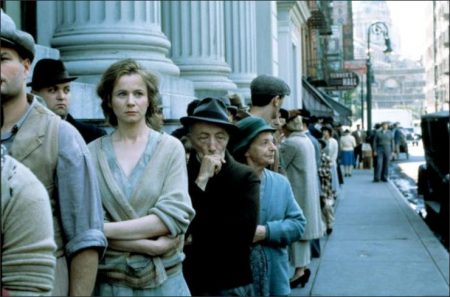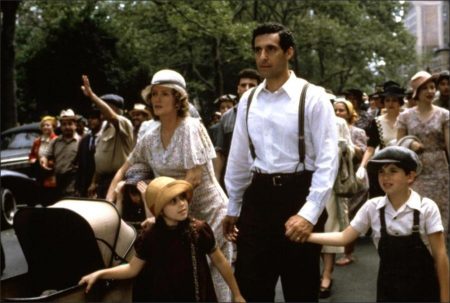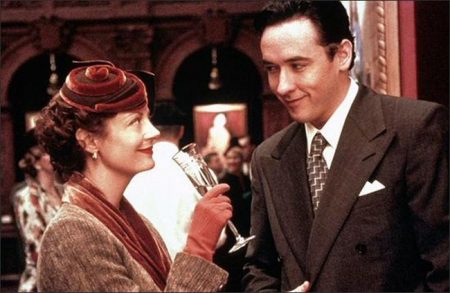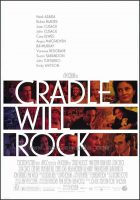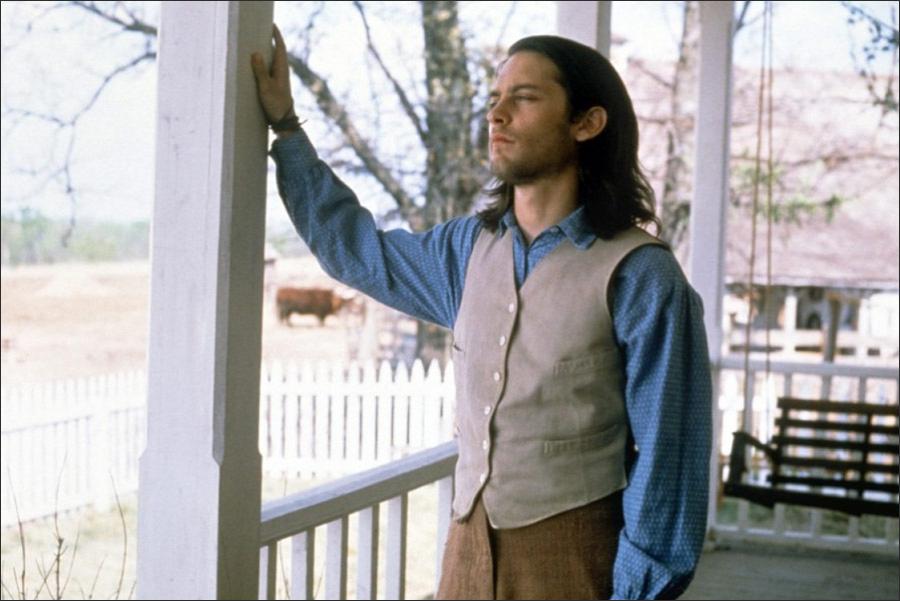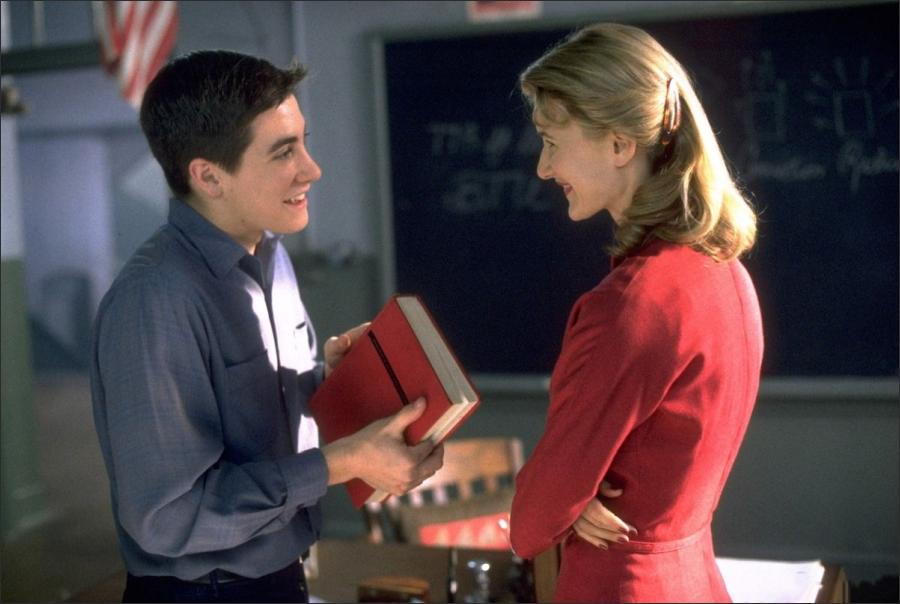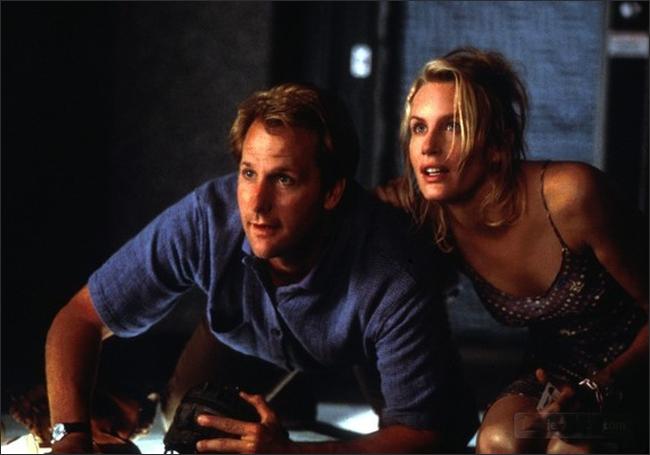Cradle Will Rock movie storyline. At the height of the Great Depression, aspiring singer Olive Stanton (Emily Watson) dreams of getting a job as an actress with the Federal Theater Project (FTP). Playwright Marc Blitzstein (Hank Azaria) is working on his new musical, The Cradle Will Rock, but lacks the inspiration to finish it. While attending a public protest, he is visited by two imaginary figures representing his late wife and the famed German playwright Bertolt Brecht. They encourage him to make the play more relevant to the times rather than an abstract concept.
At the same time, the FTP faces increasing pressure from the federal government, which has begun investigating alleged leftist infiltration of American society through the House Committee on Un-American Activities. The WPA, faced with the threat of losing its budget, cuts funding for all FTP productions, lays off thousands of workers, and orders all ongoing projects, including The Cradle Will Rock, to cease their activities. The local unions for the musicians and actors refuse to let them perform without federal approval, forcing the show to close.
Rather than give in, the show’s director, Orson Welles (Angus Macfadyen) and producer, John Houseman (Cary Elwes), set up an improvised performance in a shuttered theater, with Blitzstein as both the cast and the orchestra. As he begins the first song, the other actors suddenly appear in the audience and perform the entire play without setting foot on the stage. The climax then cuts to a sequence showing a group of workers destroying the mural Man at the Crossroads, following a dispute between Nelson Rockefeller (John Cusack) and Diego Rivera (Ruben Blades) over the latter’s explicit support for communism.
Cradle Will Rock is a 1999 American historical drama film written, produced and directed by Tim Robbins. The story fictionalizes the true events that surrounded the development of the 1937 musical The Cradle Will Rock by Marc Blitzstein; it adapts history to create an account of the original production, bringing in other stories of the time to produce a social commentary on the role of art and power in the 1930s, particularly amidst the struggles of the labor movement at the time and the corresponding appeal of socialism and communism among many intellectuals, artists and working-class people in the same period.
The film is not based on Orson Welles’s script The Cradle Will Rock, which was to be an autobiographical account of the play’s production. It went into pre-production in 1983 with Rupert Everett on board to play Welles before the backers pulled out and the production collapsed. The film lost an estimated $33 million.
Film Review for Cradle Will Rock
It was a time when the rich flirted with communists and fascists, when the poor stood in bread lines, when the class divide in America came closer to the boil than ever before or since. The 1930s were a decade when the Depression put millions out of work and government programs were started to create jobs. One of them was the Federal Theatre Project, which funded “free theater for the people” all over the country, but was suspected by U.S. Rep. Martin Dies of harboring left-wing influences. Since the last right-wing theater was in ancient Greece, his was a reasonable suspicion.
Tim Robbins’ sweeping, ambitious film “Cradle Will Rock” is a chronicle of that time, knitting together stories and characters both real and fictional, in a way similar to John Dos Passos’ novel USA. It tells the story of the production of Marc Blitzstein’s class-conscious musical “The Cradle Will Rock”; its opening has been called the most extraordinary night in the history of American theater.
Intercut with that production are stories about Nelson Rockefeller (John Cusack), the millionaire’s son who partied with the Mexican communist painter Diego Rivera (Ruben Blades) and commissioned his mural for Rockefeller Center; and the newspaper publisher William Randolph Hearst (John Carpenter) and fictional steel tycoon Gray Mathers (Philip Baker Hall), who bought Renaissance masterpieces secretly from Mussolini, helping to finance Italian fascism.
We meet theatrical giants like Orson Welles (Angus Macfadyen) and John Houseman (Cary Elwes). And little people like the homeless Olive Stanton (Emily Watson), who eventually sang the opening song in “Cradle,” and Tommy Crickshaw (Bill Murray), a ventriloquist so conflicted that he helps a young clerk (Joan Cusack) rehearse her red-baiting testimony while his dummy sings “The Internationale,” apparently on its own.
There is a lot of material to cover here, and Robbins covers it in a way that will be fascinating to people who know the period–to whom names like Welles, Rockefeller, Hearst and Rivera mean something. For those who don’t have some notion of the background, the film may be confusing and some of its characters murky. It needs a study guide, and viewing “Citizen Kane” might be a good place to start.
The film’s anger is founded in the way Dies and his Congressional red-hunters brought the full wrath of the government down on poverty-stricken theater people whose new musical might be a little pink, while ignoring fat cats like Hearst, who not only bought paintings from Mussolini for bags full of cash, but whose newspapers published flattering stories about the dictator from his former mistress Margherita Sarfatti (played by Susan Sarandon).
Nelson Rockefeller’s flip-flops provide in some ways the best material in the film. Swept up in the heady art currents of the time, Rockefeller commissioned Rivera to paint a mural–and then, while the painter and his assistant were busy covering a huge wall of Rockefeller Center, was unhappy to learn the amorphous blobs hovering above portraits of the rich were molecules of syphilis and bubonic plague. The last straw was Rivera’s addition of a portrait of Lenin. Rocky ordered the mural sledge-hammered to dust, and its destruction is intercut with the crisis in the “Cradle Will Rock” production (one syphilis molecule escapes the hammers and clings to the wall in defiance).
“Cradle Will Rock” was produced under the aegis of Welles and Houseman, whose Mercury Theater dominated radio drama, and whose “Citizen Kane” was only a few years in the future. Welles was a golden boy, only 21, flamboyant and cocky. When union actors declare a rest break during a rehearsal, he thunders, “You’re not actors! You’re smokers!” Then he limousines off to 21 for oysters and champagne. Welles comes across as an obnoxious and often drunken genius in a performance by Macfadyen that doesn’t look or sound much like the familiar original (ironically, Tim Robbins would make an ideal Welles).
Houseman is more admirable, especially after Federal Theatre funds are cut off and the Army padlocks the theater where “The Cradle Will Rock” is set to open. He and Welles lead a defiant march uptown to another theater, and when Actors’ Equity forbids its members to step foot onstage, composer Blitzstein (Hank Azaria) plays his score on a piano, and the cast members stand up in the audience to perform their roles.
The power of the Bliztstein play itself never really comes across in the film. It’s too fragmented, and its meaning seems less political than theatrical. It’s not what the play says that matters, so much as the fact that it was performed despite attempts to silence it. Its opening night was, in a way, an end of an era. Welles and Houseman soon went off to Hollywood and America went off to war, and it was 30 years before young Americans felt revolutionary again. Nelson Rockefeller went on to portray a “moderate” Republican, Hearst retired to San Simeon, and Rockefeller Center lost a tourist draw. Think how amusing the Lenin portrait would seem today, and imagine the tour guides pointing out the molecules of bubonic plague.
Cradle Will Rock (1999)
Directed by: Tim Robbins
Starring: Hank Azaria, Ruben Blades, Joan Cusack, John Cusack, Philip Baker Hall, Cherry Jones, Bill Murray, Vanessa Redgrave, Susan Sarandon, John Turturro, Emily Watson
Screenplay by: Tim Robbins
Production Design by: Richard Hoover
Cinematography by: Jean Yves Escoffier
Film Editing by: Geraldine Peroni
Costume Design by: Ruth Myers
Set Decoration by: Debra Schutt
Art Direction by: Richard Hoover, Peter Rogness, Troy Sizemore
Music by: David Robbins
MPAA Rating: R for some language and sexuality.
Distributed by: Buena Vista Pictures
Release Date: December 10, 1999
Hits: 143
